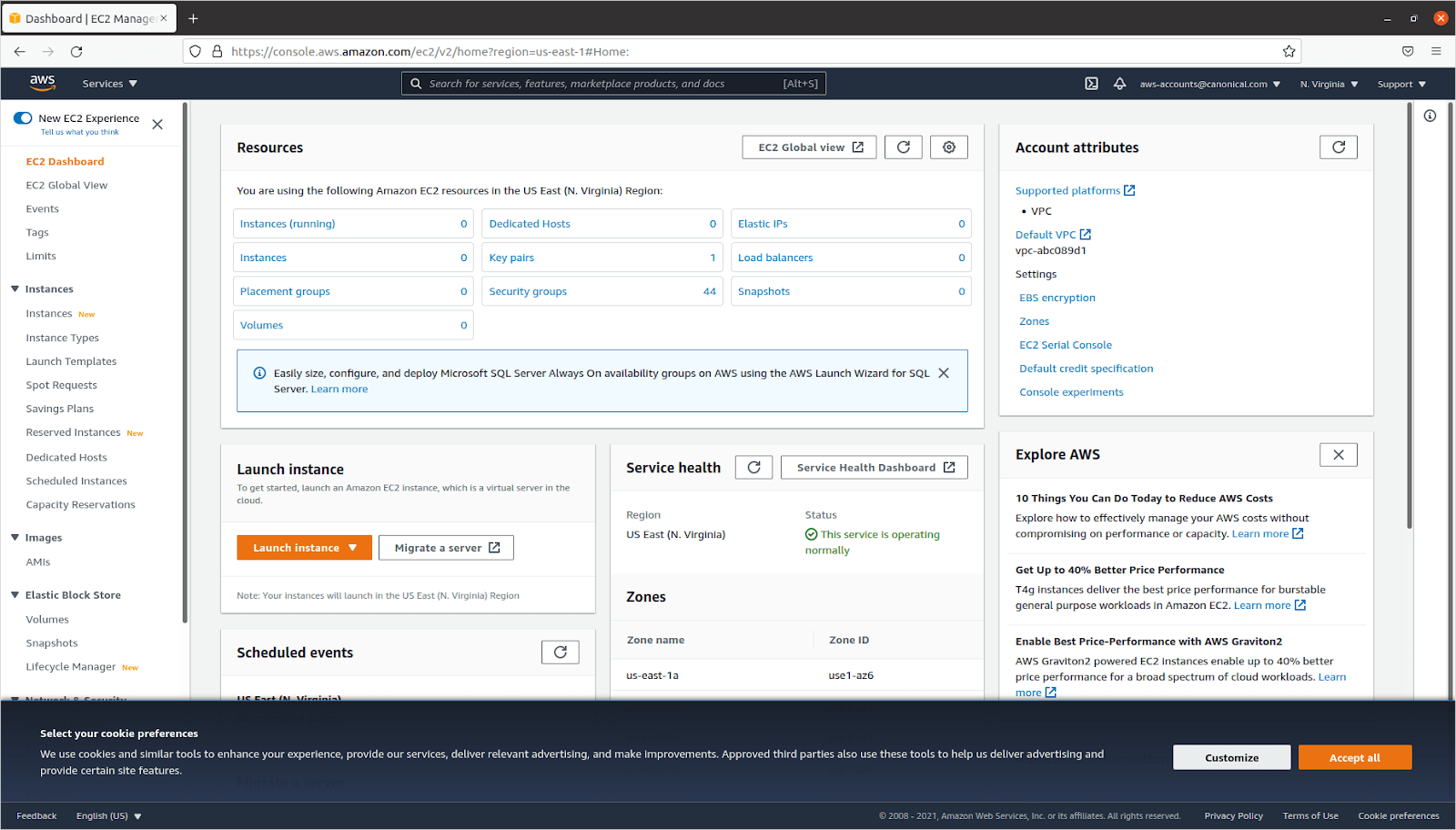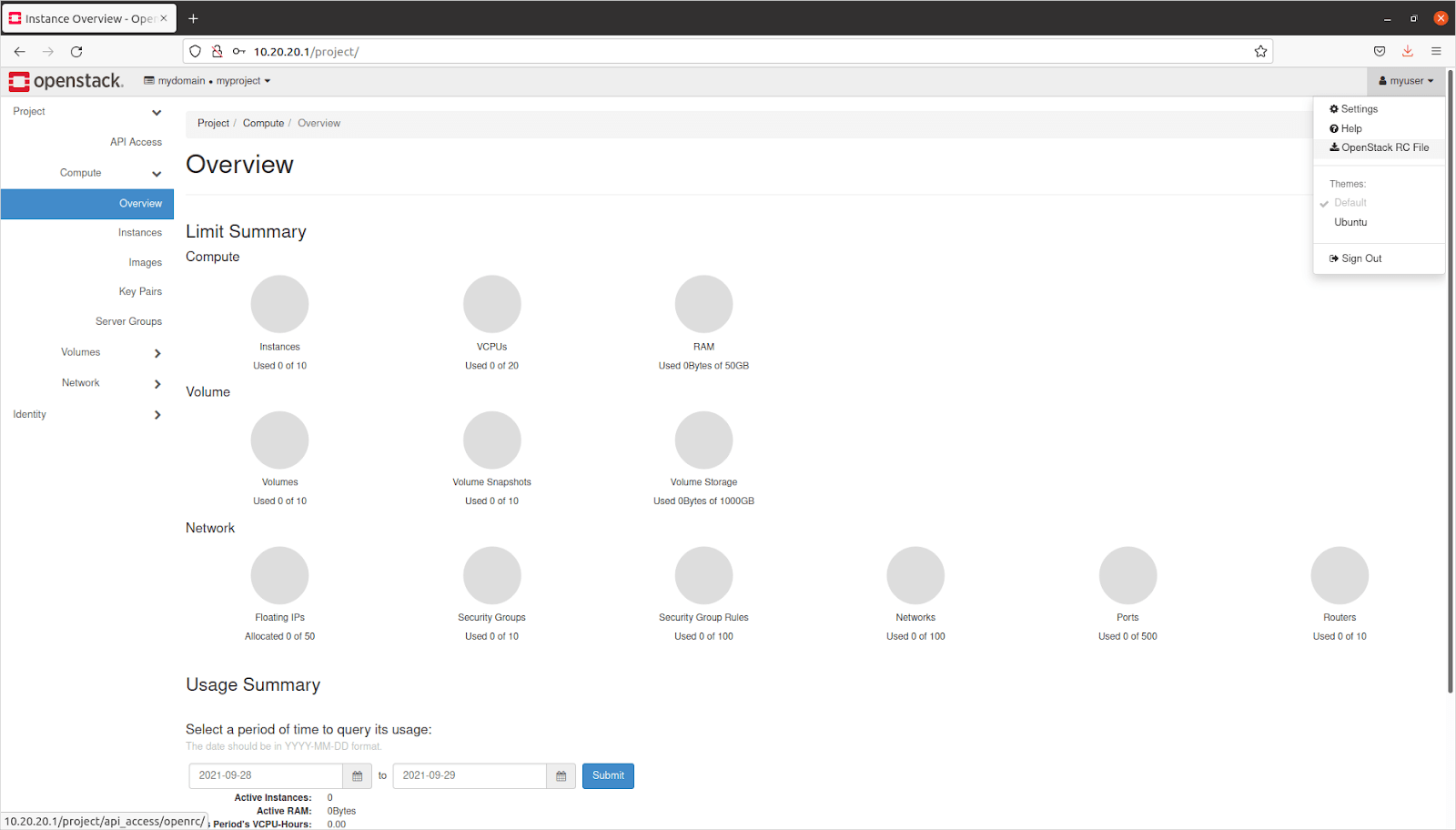OpenStack vs AWS: which one is better for you?
Tytus Kurek
on 29 October 2021
Tags: cloud , Hybrid & Multi cloud , OpenStack , Private cloud , Public cloud
OpenStack vs AWS (Amazon Web Services) is a discussion that almost every organisation must conduct when adopting a cloud strategy. This is because OpenStack and AWS are undoubtedly leading technologies in the public and private cloud spaces. While AWS is the most popular commercial cloud platform, OpenStack remains its most popular open source equivalent. Both have their own pros and cons.
But which one is better for you? Or even more importantly, can you use both to reap their benefits at no extra cost? In the following blog post, we will try to answer these questions. But first, let’s start with exploring main differences between OpenStack and AWS.
What is the difference between OpenStack and AWS?
The OpenStack project originally started as an open source implementation of the AWS EC2 service. Over time, it has evolved into a standalone platform, driven by the Open Infrastructure Foundation (now part of the Linux Foundation) and the entire community. As a result, the two platforms differ somewhat in their architecture, the features included, and the use cases for which they were designed.
What is AWS?
Founded in 2006, AWS is the most mature public cloud platform. It provides access to highly scalable compute, network, and storage resources through a company website and charges for their consumption based on a pay-as-you-go billing method. By entering the cloud market first and ensuring simplicity of the service, AWS has gained thousands of customers over the years and continues to occupy an unwavering position in the cloud platform popularity ranking. AWS was initially started as a public cloud platform only, but Amazon later extended its offering towards private clouds with the AWS Outposts service.

What is OpenStack?
Contrary to AWS, OpenStack is an open source cloud platform. It was designed to manage distributed compute, network, and storage resources in the data centre and enable on-demand resource provisioning capabilities, providing a similar experience to AWS, while hosting applications on users’ premises. OpenStack allows for bare metal, virtual machine and container workloads provisioning, and can be used for both private and public cloud implementation purposes. It is the most popular open source cloud platform, with ~65M cores running in production, a market size of ~$30B and thousands of commercial adopters all over the world.

When to use OpenStack vs AWS?
Since it sounds like there is no significant difference in the way AWS and OpenStack work and what value they bring, you might be wondering now where this whole dilemma around OpenStack vs. AWS comes from. Is it just because AWS is proprietary and OpenStack is open source? Well, not really. The main differences are in the cost models and the level of sovereignty the platforms provide. Let’s explore in detail.
Understanding OpenStack vs AWS economics
In principle, what differentiates AWS and OpenStack is that the former already exists, while the latter you have to build yourself. Since building cloud infrastructure from scratch entails significant upfront investments (setting up a data centre, hardware purchase, cloud deployment consulting fee, etc.), AWS is usually a more compelling option at the beginning of the digital transformation journey. At the end of the day, all you need to do is create an account on AWS and attach a credit card, and you can start using cloud resources right away. AWS will charge you based on the actual resource consumption.
On the other hand, those costs can quickly become significant as the number of workloads continues to increase. Over time, it may turn out that the aggregated recurring cost of using AWS will exceed the cost of deploying OpenStack. Of course, running cloud infrastructure on-premises also comes with some recurring costs (hosting facilities, power consumption, staff salary, etc.), but these are lower when running workloads in the long-term and at scale. You can estimate the savings yourself using Canonical’s private cloud pricing calculator.
OpenStack or AWS for digital sovereignty?
Digital sovereignty is another dimension to consider. AWS is proprietary, owned by a single vendor and operated by Amazon. Even its on-prem extension – AWS Outposts – comes with a pre-determined hardware (no “bring your own device” policy). In turn, OpenStack is 100% open source. Its code is fully transparent, leading to no vendor lock-in and, in general, a higher level of security. Given that users usually deploy OpenStack in their own data centers, this approach helps to keep sensitive workloads on-premises and align with local regulations.
Combine and conquer!
So which one is better for you? Well, you’ve probably got it already: it really depends on your use case. If you need immediate access to cloud resources with no upfront costs and you are not concerned about sovereignty, use AWS. In turn, if you are looking for a dedicated cloud infrastructure for years and you can afford to build one on-prem, use OpenStack. As simple as that.
Interestingly, you can also use both at the same time in a hybrid/multi-cloud architecture. This approach enables you to optimise infrastructure costs and the level of sovereignty even further. You can start small with AWS and build a cost-effective private cloud platform based on OpenStack once the demand for resources increases. You can then move the majority of your workloads there, benefitting from cost reduction, while still using highly scalable AWS resources during heavy load periods and for periodic compute-intensive operations execution.
Divide and conquer? Not this time. Combine and conquer!

Move to hybrid/multi-cloud incrementally
The biggest advantage of OpenStack and AWS is that they both enable incremental adoption of the hybrid/multi-cloud strategy at no extra cost. Take the following baby steps before first before you overinvest:
- Read the whitepaper about hybrid/multi-cloud to learn more about the rationale behind the hybrid/multi-cloud strategy adoption.
- Start small with OpenStack . There is always time to scale it out later on. You can get started with OpenStack on Ubuntu on a single machine in a few simple steps.
- Get in touch with Canonical for more information about our commercial services.

What is a multi-cloud?
There is no one size fits all for cloud architecture.
Developing the optimal cloud strategy requires evaluating your business needs and aligning them with the different solutions available.
Newsletter signup
Related posts
OpenStack cloud – happy 15th anniversary!
Happy birthday, OpenStack! It’s astonishing how fast time flies – fifteen years already. Yet, here we are: OpenStack cloud still stands as a de facto standard...
Join Canonical at the first-ever African OpenInfra Days
For the second time, and in less than one month, Canonical is coming to East Africa! Three weeks ago, we had the first-ever UbuCon Africa, which was...
OpenStack PoC? No problem!
Setting up a proof of concept (PoC) environment is often one of the first steps in any IT project. It helps organizations to get to grips with the technology,...
